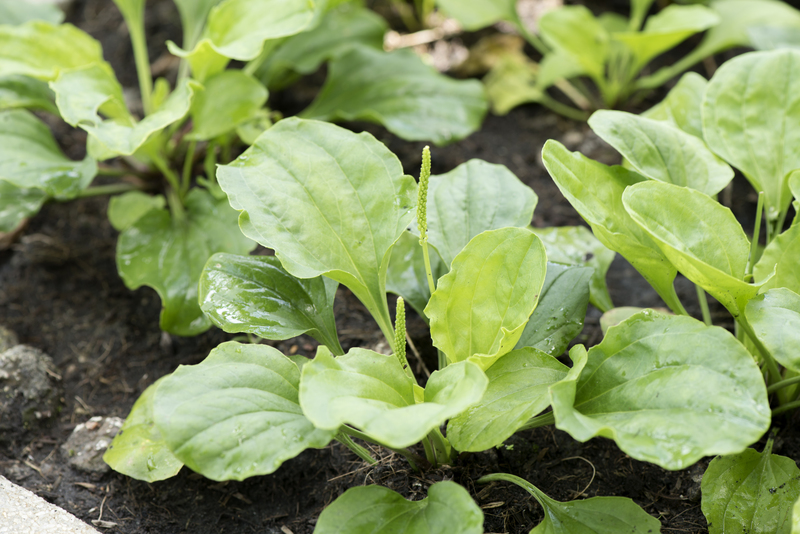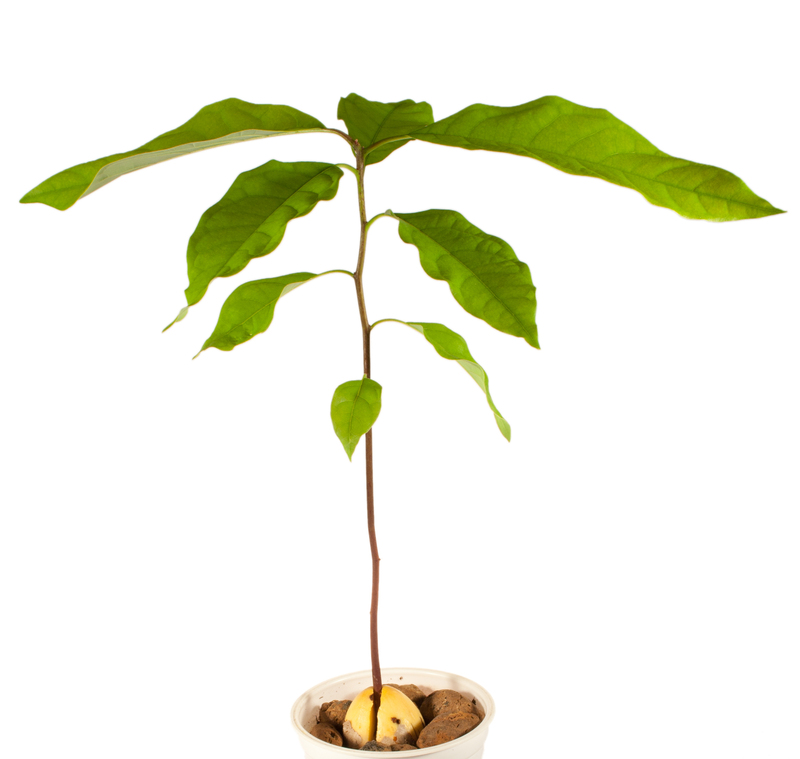Planting the Seeds for a Kid-Focused Garden
Posted on 15/09/2025
Planting the Seeds for a Kid-Focused Garden: A Complete Guide
Gardening isn't just a pastime for adults--it's an engaging, educational, and healthy activity for children of all ages. Planting the seeds for a kid-focused garden teaches kids about nature, sustainability, patience, and responsibility. Moreover, a kid's garden provides space for creativity, physical activity, and hands-on learning. If you're interested in turning your backyard into an eco-friendly haven that captivates young minds, this comprehensive guide will help you create the ultimate children's garden, from planning to planting.

Why Create a Garden for Kids?
Benefits of a Child-Centric Garden
- Educational Value: Kids learn about plant biology, soil science, weather, and ecosystems firsthand.
- Health and Wellness: Outdoor activities improve physical health, boost mood, and reduce screen time.
- Life Skills: Gardening nurtures patience, responsibility, and teamwork.
- Environmental Stewardship: Children gain respect for nature and learn the importance of sustainability.
- Sensory Stimulation: Gardens provide vivid sensory experiences--sight, smell, touch, taste, and even sound.
- Family Bonding: The garden becomes a shared space, encouraging family interaction and collaboration.
Designing a garden for kids lays the foundation for lifelong curiosity and a healthy relationship with the natural world. Whether you have a sprawling yard or a small balcony, planting a child-centered garden is an achievable and rewarding project.
Planning Your Kids' Garden: Key Considerations
Location & Safety First
- Sunlight: Choose a spot that receives at least six hours of sunlight daily for most fruits and vegetables.
- Safety: Avoid areas close to busy streets, toxic plants, sharp-edged garden tools, or unsafe garden chemicals.
- Accessibility: Ensure paths are clear and wide enough for little feet, wheelbarrows, or small mobility aids.
- Visibility: Select a location visible from the house to supervise kids easily.
Kid-Friendly Garden Design Ideas
- Raised Beds: Make planting and harvesting easier for kids of all sizes.
- Paths and Mazes: Curvy or spiral paths create adventure and movement through the garden.
- Secret Hideaways: Incorporate bean teepees or sunflower houses for imaginative play.
- Sensory Zones: Include areas dedicated to touch, smell, and taste, like a patch of mint or lamb's ear.
- Signage: Decorate with painted stones, whimsical signs, and plant labels for easy identification.
Choosing the Best Plants for a Children's Garden
Kid-Friendly Plant Varieties
When planting the seeds for a kid-focused garden, select varieties that are safe, quick to germinate, colorful, and offer interactive features. Opt for plants that engage every sense and are low maintenance for little hands.
- Sunflowers: Tall, fast-growing, and dramatic--kids love watching these giants soar skyward.
- Snapdragons: Colorful and fun, with flowers kids can "snap."
- Cherry Tomatoes: Sweet, bite-sized fruits are perfect for snacking straight from the vine.
- Carrots and Radishes: Quick to grow and easy to pull from the earth--kids love the surprise!
- Beans and Peas: Climbing varieties create living teepees and are simple to harvest.
- Strawberries: Delicious, low-maintenance, and perennial favorites among children.
- Herbs: Mint, basil, lavender, and chives offer interesting scents and flavors for sensory play.
- Lamb's Ear: Velvety, soft leaves invite tactile discovery.
- Calendula and Nasturtiums: Colorful edible flowers for culinary adventures.
Avoid These Garden Hazards
- Toxic Plants: Steer clear of foxglove, oleander, and castor bean.
- Thorny Vegetation: Roses and certain berry bushes can cause scrapes or injuries.
- Allergies: Watch out for common allergens (like ragweed or strong-scented pollen emitters).
How to Plant a Kid-Centered Garden: Step by Step
Involve Kids in Every Step
For a truly engaging children's garden, get kids involved from planning through to harvest. Here's a step-by-step guide:
- 1. Prep the Site: Clear weeds, rocks, and debris. Let kids help with safe tasks like raking or digging small holes.
- 2. Plan the Layout: Use paper and crayons to design a dream garden map together. Decide where flowers, veggies, and paths will go.
- 3. Choose Seeds and Seedlings: Take a trip to the nursery with your child. Let them pick a few favorites!
- 4. Planting: Show kids how deep to plant each seed. Use finger-width measurements for simple instructions.
- 5. Watering: Teach proper watering techniques--gently, at the base, in the morning.
- 6. Mulching: Apply straw, leaves, or bark chips to keep the soil moist and suppress weeds--another fun, hands-on task.
- 7. Label Everything: Paint or write plant names on stones, sticks, or craft labels.
- 8. Ongoing Care: Guide kids in daily or weekly chores like checking for pests, pruning, and weeding.
- 9. Harvesting: Let kids enjoy pulling carrots, picking tomatoes, and collecting flowers. Celebrate with a garden-fresh snack!
- 10. Reflect and Record: Start a simple garden journal--draw pictures, measure growth, and document successes and learning moments.
Making Gardening Fun: Activities for Kids
Creative and Educational Garden Projects
Planting seeds is just the beginning! Keep interest high with themed garden activities for kids that mix fun, learning, and creativity.
- Garden Art: Design garden markers, wind chimes, or stepping stones with paints, beads, and recycled materials.
- Bug Safari: Go on an insect hunt--observe butterflies, ladybugs, worms, and bees.
- Sunflower Houses: Plant sunflowers and beans in a circle to create a living fort.
- Pumpkin Patch: Grow pumpkins for autumn carving or cooking together.
- Pizza Garden: Plant basil, tomatoes, oregano, and peppers in pie-shaped sections.
- Worm Bin: Teach kids about composting by creating a simple worm farm for the garden.
- Seasonal Scavenger Hunts: Make lists for children to find specific leaves, flowers, seeds, or bugs throughout the year.
- Science Experiments: Test different soil types, sunlight, and watering routines; chart and discuss results.
Engaging the Senses: Sensory Gardening
- Touch: Grow plants with interesting textures, like lamb's ear, moss, or succulents.
- Smell: Choose aromatic herbs (mint, lavender) and fragrant flowers.
- Taste: Let kids nibble on edible plants--cherry tomatoes, strawberries, peas, and nasturtiums.
- Sight: Plant flowers and vegetables in rainbow rows or patterns.
- Sound: Add ornamental grasses, bamboo, or wind chimes; celebrate the buzz of bees and chirping of birds.
Gardening Tools and Gear for Kids
Safe and Child-Sized Tools
A kid-focused garden should have sturdy, age-appropriate tools that fit small hands. Involve kids in caring for their gear--this teaches responsibility and increases their sense of ownership.
- Small Trowels: Easy for digging and planting.
- Child-Sized Watering Cans: Lightweight and manageable.
- Mini Rakes and Hoes: Ideal for prepping soil and removing weeds.
- Garden Gloves: Prevents scrapes and keeps hands clean.
- Sun Protection: Wide-brim hats, sunglasses, and SPF clothing keep kids safe outdoors.
- Kneeling Pads: Pads or small stools make kneeling comfortable on hard soil.
*Always supervise young children when using garden tools, and store everything in a safe place after use.*
Seasonal Activities in the Children's Garden
Planting a family-friendly garden for children offers unique opportunities throughout the year. Adjust activities by season to keep the experience fresh and exciting:
- Spring: Start seeds indoors, plant cold-hardy crops, build bee hotels, and watch for earthworms.
- Summer: Water daily, harvest early crops, organize garden parties, and plant butterfly-friendly flowers.
- Fall: Collect fallen leaves for crafts or compost, plant bulbs for next year, and harvest root veggies
- Winter: Create windowsill gardens with herbs, plan next year's garden, and make birdfeeders for feathered visitors.
Common Challenges and Solutions in Kids' Gardening
How to Overcome Typical Hurdles
- Short Attention Spans: Opt for fast-growing plants, bite-sized tasks, and quick results to maintain interest.
- Pest Control: Use natural methods like hand-picking bugs, neem oil, or companion planting (marigolds deter nematodes).
- Learning from Mistakes: Encourage kids to see failures as lessons; not every plant will thrive, and that's okay.
- Weather Setbacks: Teach resilience when facing unexpected frosts or droughts, and brainstorm solutions together.
- Space Limitations: Urban and container gardening allow even small-space families to grow plenty.
Encouraging Curiosity and Ownership
Let Kids Take the Lead
Empower children by assigning them their own garden plots or pots. Let them make decisions--what to plant, how to decorate, when to harvest. Document growth with photos or journals. Praise their achievements and milestones, big or small.
Incorporate storybooks, nature guides, and digital resources for more learning. The more ownership children feel, the more invested they'll be in the success of their garden.

Gardening with Kids: Long-Term Impact
The benefits of planting the seeds for a kid-centered garden extend far beyond the growing season. Children gain:
- Lifelong appreciation for nature and healthy food
- Hands-on STEM knowledge
- Greater confidence and perseverance
- Memories of joyful, shared family experiences
Many adults who gardened as children recall a formative moment--planting a bean, spotting a butterfly, or tasting a sun-warmed strawberry straight from the vine. These experiences can last a lifetime, shaping attitudes and habits for years to come.
Conclusion: Start Planting Seeds for a Kid-Focused Garden Today
A colorful, lively, and child-focused garden is more than just an outdoor project--it's an investment in curiosity, creativity, and well-being for your family. By involving children at every stage, choosing the right plants, and nurturing an environment that's fun and safe, you'll be planting seeds of knowledge and wonder that will grow for years.
So gather your gear, round up the little gardeners, and let your imagination--and your garden--take root!

